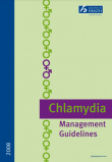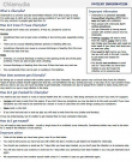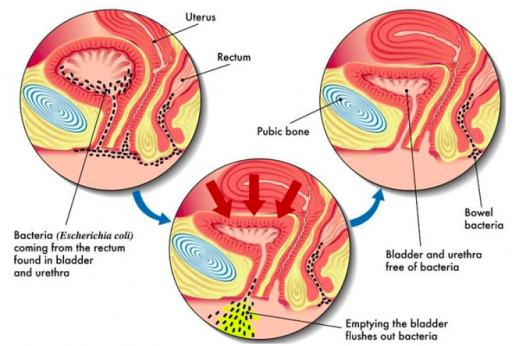Genital herpes is a common viral infection caused by a virus known as the herpes simplex virus (HSV).
On this page, you can find the following information:
- What is genital herpes?
- How is genital herpes spread?
- What are the symptoms of genital herpes?
- How is genital herpes diagnosed?
- How has my partner caught genital herpes?
- How is genital herpes treated?
- Counselling for genital herpes
Key points
- Most people have mild symptoms or none at all. Others get a painful rash and blisters on their genitals and surrounding area.
- Genital herpes is usually passed on to others through sex.
- It can be passed on when you have no symptoms and symptoms can appear many years after being infected.
- There is an effective treatment if symptoms are causing you pain or discomfort.
- The emotional impact of being diagnosed with genital herpes can be worse than the symptoms, so there is counselling support available.
What is genital herpes?
Genital herpes is a common viral infection caused by a virus known as the herpes simplex virus (HSV).
There are two types of the virus, types 1 and 2 (HSV-1 and HSV-2). As well as genital herpes, HSV can infect your mouth and cause cold sores. HSV-1 and HSV-2 infections look the same and you can only tell them apart by lab testing.
Because genital herpes can be passed to others through sexual contact, it is often referred to as a sexually transmitted infection (STI).
As many as 1 in 3 adults has the virus that causes genital herpes. Once you have HSV it remains in your body and becomes active again from time to time.
On average, symptoms of genital herpes are likely to recur 4–5 times in the first 2 years after being infected with HSV. However, over time the virus tends to become active less often and each time you get symptoms they are less severe.
How is genital herpes spread?
Genital herpes is usually transmitted by having sexual contact (vaginal, oral or anal) with someone who carries HSV. You can get genital herpes through direct contact with an infected blister or sore, usually through sexual contact. You can also transmit or get the virus when you or your partner have no symptoms present (this is known as ’viral shedding’).
Most people who infect others don’t realise they are putting their partners at risk.
- Around 80% of people with genital herpes don’t know they have the virus because they have very mild symptoms or none at all.
- More than 75% of people who have genital herpes get it from people who are entirely unaware that they have it themselves.
Using condoms reduces your risk of passing on the virus by about 50%, but does not remove it completely.
You cannot catch genital herpes by sharing cups, towels or bath water, or from toilet seats. It can only be spread by close skin-to-skin contact.
HSV that causes genital herpes does not cause cervical cancer.
What are the symptoms of genital herpes?
The symptoms of genital herpes vary a lot. Most people (80%) have very mild symptoms or none at all.
Symptoms can vary from a mild area of irritation to more painful blisters or sores and generally feeling unwell. Common symptoms may include:
- irritation or sores on the vulva and entrance to the vagina
- sometimes sores on the cervix
- sores on your anus (bottom), buttocks and tops of your thighs.
If you are having a first episode of genital herpes, you are more likely to also feel generally unwell and have fever, headache and general bone and muscle aches.
This may last for several days, during or after which reddened areas may appear on your genitals. These may develop into painful blisters. The blisters then burst, generally to leave sores that gradually heal, usually without scarring.
The severity of this first episode varies between people, but for some it may be severe and last for up to 3 weeks if not treated. These symptoms should quickly resolve with treatment. There is effective treatment available if symptoms are problematic.
How is genital herpes diagnosed?
The best way to find out if you have genital herpes is to have a sexual health check-up. This may involve a physical examination and a swab from the affected area to test for HSV. To confirm genital herpes the lab needs to find herpes simplex virus types 1 or 2 (HSV-1 or HSV-2) on a swab.
Diagnosis is easier if early ulcers or blisters are present.
Because it is possible to have another STI at the same time, a full sexual health check-up should be done.
Sexual contacts should be informed of the diagnosis and it may be advisable for them to have a sexual health check-up.
How has my partner caught genital herpes?
If your partner has only just been diagnosed with genital herpes, this does not necessarily mean that they have been unfaithful to you or sexually promiscuous in the past.
- Your partner may have caught genital herpes from you. You can carry the virus without knowing you have it as some people have no symptoms.
- It is also possible that your partner caught the virus from a cold sore on your mouth or face during oral sex. You can pass the virus on even if you don’t have a cold sore at the time of contact.
- Your partner may have contracted the virus from a previous sexual partner, even several years ago. The virus can remain inactive in your body for long periods.
How is genital herpes treated?
Genital herpes is best treated with antiviral tablets, which stop the herpes virus from multiplying. You can also use the following simple treatments to ease the symptoms, but they don’t stop the virus from multiplying. You still need antiviral tablets.
Simple treatments for the relief of discomfort
- Wear loose underclothes, preferably cotton (not nylon), to help minimise discomfort and allow healing.
- Use plain water or saline solution with cotton wool to clean and soothe the area. To make a saline solution, use 1 teaspoon of salt in 600ml of water or a handful of salt in a shallow bath.
- Don’t use scented soaps, bubble bath, etc in the area, as these may irritate it.
- Using a hairdryer on its lowest setting to dry the area may be more comfortable than using a towel.
- Pain relief medication such as paracetamol and ibuprofen may ease the pain. Check with your pharmacist or other health professional whether taking these is suitable for you.
- Ice wrapped in a face cloth or flannel and placed over the sores for 5–10 minutes may be soothing. Don’t apply ice directly to the sores as this can cause ‘ice burn’.
- If you find peeing painful, try applying Vaseline® to the area or sitting in a warm bath before urinating (peeing) or using a pump bottle full of water and spraying water on yourself while peeing.
- You can also try applying a pain relief cream (a local anaesthetic) such as lignocaine cream to the painful area. This is applied 5 minutes before peeing and should be used for a maximum of 1–2 days.
- Drink plenty of fluids as this dilutes your pee and may help reduce stinging.
Antiviral tablets to stop the herpes virus multiplying
Antiviral medicines taken by mouth, such as valaciclovir or acyclovir, are the most effective in controlling symptoms, although they can’t cure genital herpes. They stop the virus from multiplying in body cells where the virus is present. The medicine only works while you are taking it. The infection can come back when you stop taking it.
Antiviral tablets are used in the following two ways:
- To treat outbreaks as they happen (episodic treatment): The aim is to shorten the time each outbreak lasts and to relieve symptoms. This works best when taken as soon as you get symptoms and before the blisters appear.
- To prevent or reduce recurrences (suppressive therapy): If you get frequent or severe recurrent outbreaks, your doctor may recommend you take antiviral tablets every day to help prevent recurrences. Suppressive therapy is taken continuously, every day, for months or years. Suppressive antiviral therapy may help reduce the risk of transmitting the virus to sexual partners.
Antiviral creams bought over the counter from the pharmacy are not recommended as a treatment for a first episode or recurrent genital herpes as they are of little benefit. Antiviral tablets are the preferred treatment.
Counselling for genital herpes
If you have just found out that you have genital herpes, it is likely you will have a lot of questions. A diagnosis of genital herpes often comes as a shock.
For many people who have genital herpes, the physical symptoms are outweighed by the emotional stress relating to the diagnosis. There are many misconceptions about genital herpes, including the belief that it is associated with promiscuity.
Seeing a counsellor may be a good idea to discuss any concerns you may have. Counselling offers a way of dealing with your concerns.
For more information see the NZ Herpes Foundation or talk with one of their trained counsellors on 0508 11 12 13 free call (landline only) 0508 11 12 13 or 09 433 6526 (9am–5pm, Monday to Friday).
Learn more
Genital herpes – the facts NZ Herpes Foundation
Herpes myths vs facts NZ Herpes Foundation
Recognising genital herpes NZ Herpes Foundation
Herpes and relationships NZ Herpes Foundation
Herpes in pregnancy NZ Herpes Foundation
Images of genital herpes DermNet, NZ
Genital herpes NHS, UK
Genital herpes Healthy Sex, NZ
Reference
- The key facts about herpes NZ Herpes Foundation

 Phone
Phone 

